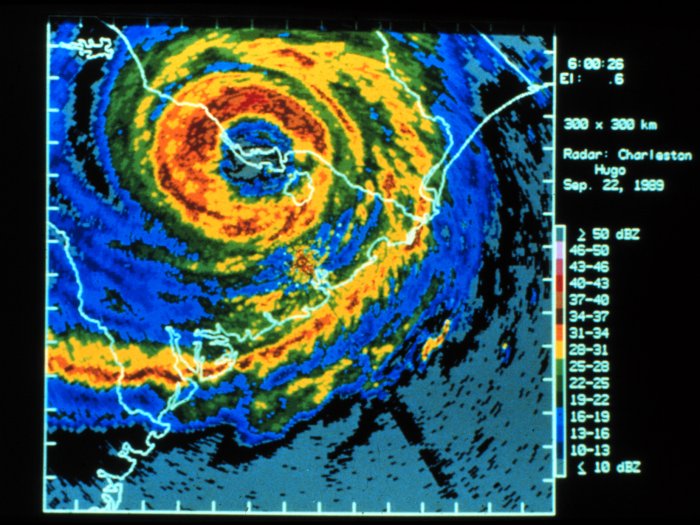
Home > Weather Instruments > Barometer
|
||||||||||||||||||||||||||||||||||||||||||
Mercury Barometer Also see READING AIRCRAFT ALTIMETERS Evangelista Torricelli , an Italian mathematician and scientist, is credited with discovering the principle of the barometer in 1644. He filled a 1 meter column of mercury and inverted it into a container also filled with mercury. The mercury inside the column fell somewhat, creating inside, a Torricellian vacuum. He noted that the height of the column of mercury fluctuated with changing air pressure. Quite simply put, barometers measure the weight of the air in the atmosphere. As the air presses down on the mercury in the container, the mercury in the column moves up. When air pressure decreases and the mercury in the column weighs more than the air pressing upon it, the mercury in the column drops. At sea level, this is normally 29.92 inches of mercury high, or about 760 millimeters. Mercury barometers are very accurate, delicate, and expensive, so most people use aneroid barometers. Aneroid Barometer The aneroid (without fluid) barometer has one or more metal cells from which air has been removed so that only a small amount remains, along with a spring inside. Increased air pressure causes the sides of the cells to be pushed closer together. Mechanically, the cells are connected by levers and pulleys which connect to a pointer that indicates the level of pressure on a dial. Often the user will be able to set the current pressure using a second pointer so that trends can be observed. Barograph A barograph is another instrument used to report atmospheric pressure. it uses an aneroid barometer mechanism as well, however in the barograph the mechanism moves a pen up and down on a chart which is attached to a slowly rotating drum. This provides a charted record of barometric changes and trends.
Pressure Conversion table
By the way, temperature impacts air pressure readings, so if precise measurements are required, corrections for temperature must be made. However, if your goal is to spot pressure trends to help you make general forecasts, these corrections are not necessary. Learn more about how pressure and weather by clicking here Learn about how meteorologists measure air pressure in the upper atmosphere by clicking here
Our website is dedicated to promoting interest in and better understanding of weather. WeatherWing has been the #1 Weather Observer Certification Training source for Oil and Aviation Interests in the Gulf of Mexico since 1998.
Source: http://WeatherWing.com Copyright 2007 all rights reserved
| ||||||||||||||||||||||||||||||||||||||||||
Home > Weather Instruments > Barometer
|

"I'd worked as an observer for years, but needed to re-certify. I learned more in this course than I ever imagined I could and I passed the exam with flying colors. I am also definately a better observer" TS, Louisiana
I knew nothing about weather at all. My new job depended on passing the weather observer certification test. Thanks to the patience and personal attention you gave us all, the entire class passed. JB, Texas
"When my company sent me to this class I thought I didn't need the training. I was wrong. Thanks" RB, Texas
You are the "Gold Standard" of teaching. Absolutely the best teacher I have ever had. DG, Louisiana

Copyright 2007 -2010 all rights reserved
 Twitter
Twitter Technorati
Technorati Stumbleupon
Stumbleupon Google Bookmarks
Google Bookmarks Facebook
Facebook Digg
Digg Blogmarks
Blogmarks Delicious
Delicious BlinkList
BlinkList Yahoo My Web
Yahoo My Web